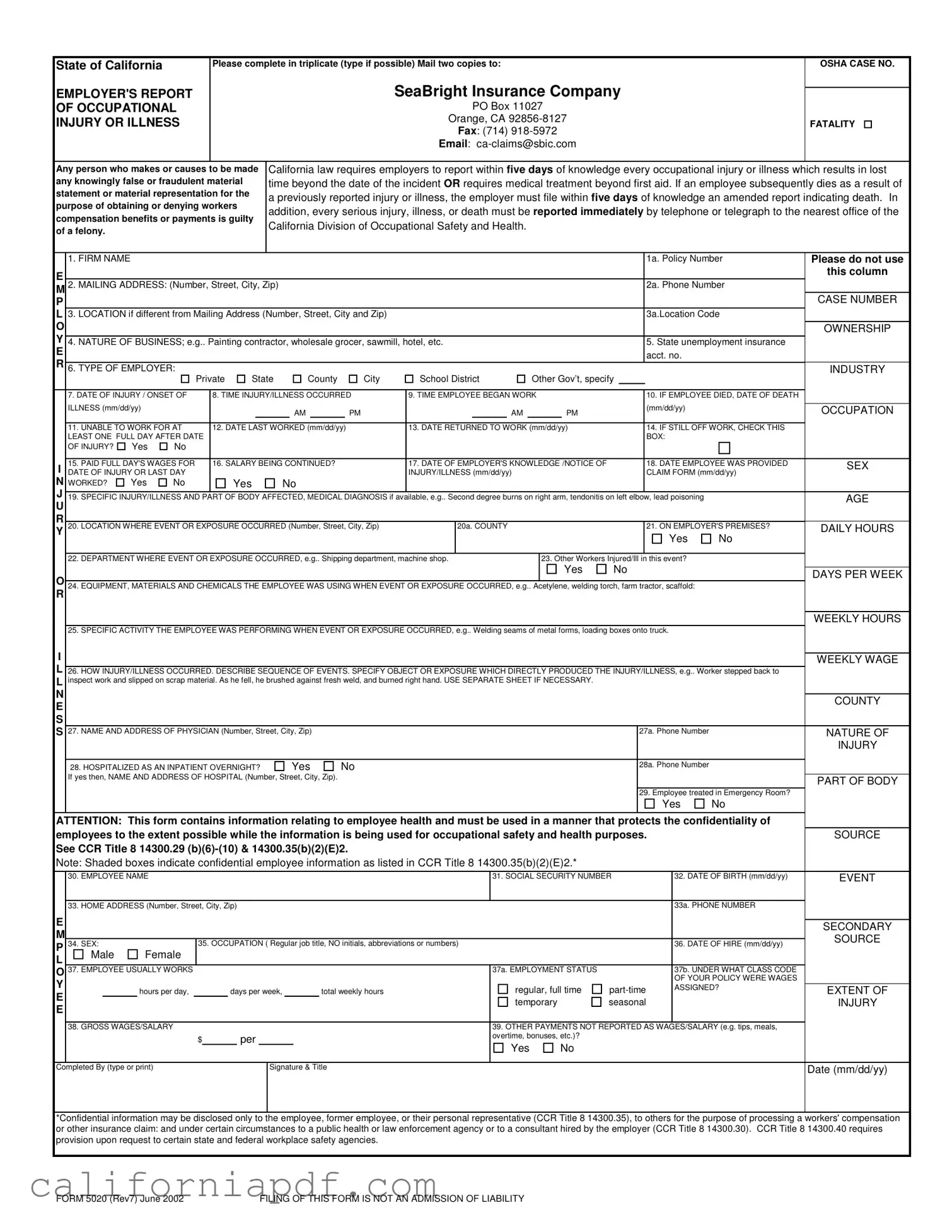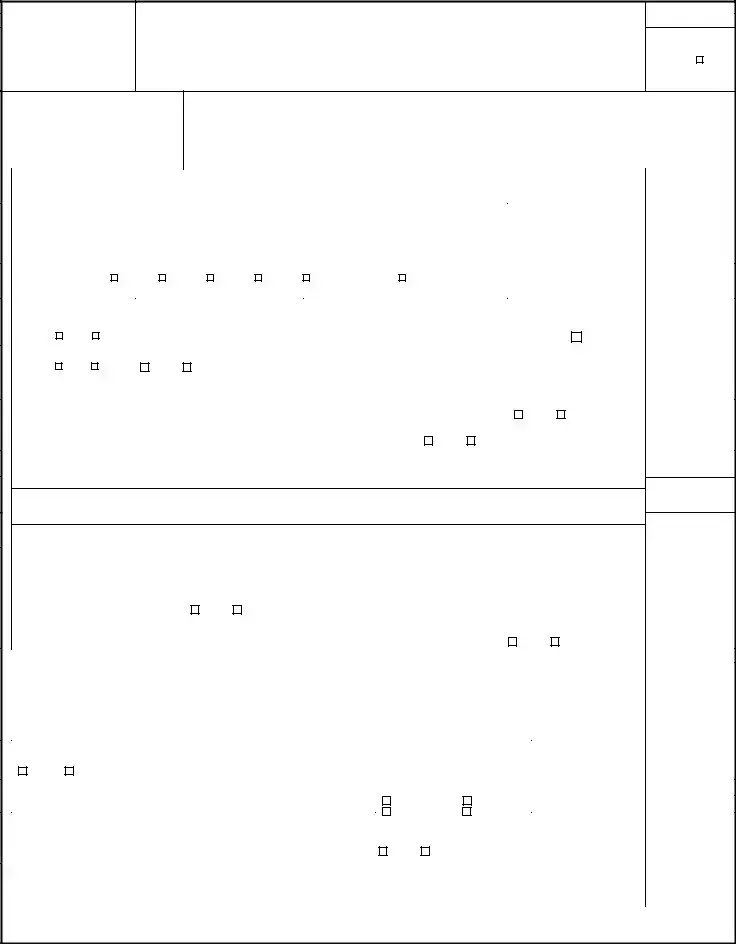The California Form 5020, or Employer's Report of Occupational Injury or Illness, is designed for employers to report work-related injuries or illnesses of their employees. The information helps with the management of workers' compensation claims. Reporting is mandatory for any occupational injury or illness resulting in lost time beyond the date of the incident or requiring medical treatment beyond first aid. Additionally, if an injury or illness leads to death, an amended report must be filed.
Employers are required to complete and submit Form 5020 within five days of becoming aware of an occupational injury or illness that results in lost time from work (beyond the incident day) or requires more than first aid treatment.
Two copies of the completed Form 5020 should be mailed to SeaBright Insurance Company at PO Box 11027, Orange, CA 92856-8127. Alternatively, it can be faxed to (714) 918-5972 or emailed to ca-claims@sbic.com.
Is it obligatory to report every injury or just specific cases?
California law mandates the reporting of every occupational injury or illness that necessitates medical treatment beyond first aid or results in missing work beyond the day of the incident. Furthermore, any serious injury, illness, or death must be immediately reported by telephone or telegraph to the nearest office of the California Division of Occupational Safety and Health (DOSH).
Are there penalties for not reporting or late reporting?
Yes, failure to report an occupational injury or illness within the specified timeframe can result in penalties. Employers are obligated to follow these requirements strictly to avoid legal repercussions and potential fines.
What should be included in the description of the injury or illness?
The description should include the nature of the injury or illness, the part of the body affected, and, if available, a medical diagnosis. Examples given in the form include "Second-degree burns on right arm," "tendonitis on left elbow," and "lead poisoning."
Certain information on Form 5020 is deemed confidential, primarily relating to the employee's personal health details. These include, but may not be limited to, the employee's name, social security number, and any medical diagnosis. Confidential information is protected by law and must be handled accordingly.
Yes, Form 5020 is applicable across various employment sectors, including private businesses, state and local government entities, and educational institutions. The form includes options to specify the type of employer, such as private, state, county, city, school district, or other government bodies.
What if the employee was not hospitalized but only treated in an emergency room?
The form asks whether the employee was treated in an emergency room and/or hospitalized as an inpatient overnight. Each scenario must be accurately reported. If the employee received treatment in an emergency room without admission to the hospital, only the relevant section should be completed accordingly.
No, filing a Form 5020 is not considered an admission of liability by the employer. It is a procedural requirement to document the occurrence of an occupational injury or illness, and it does not imply that the employer is at fault for the incident.

